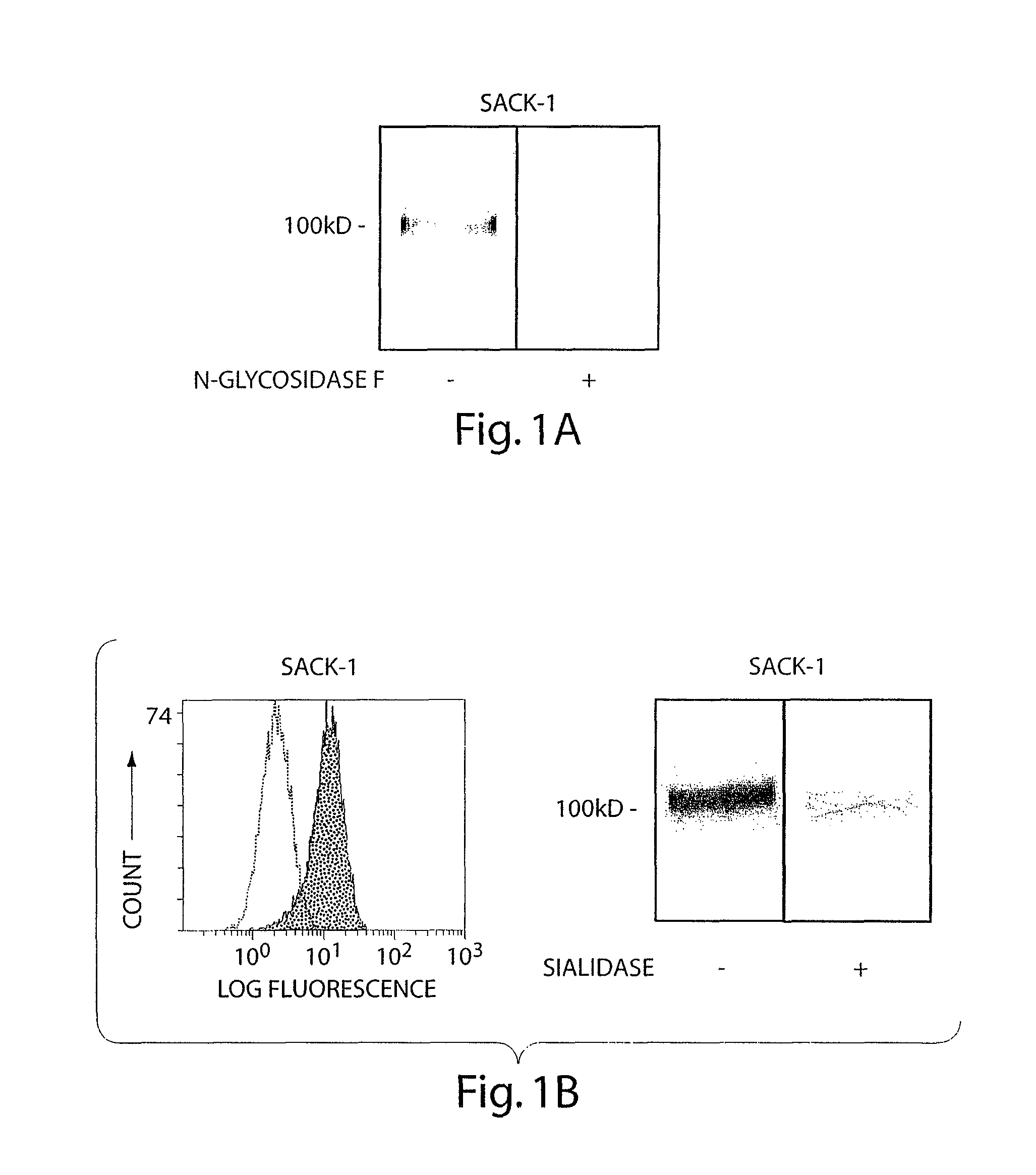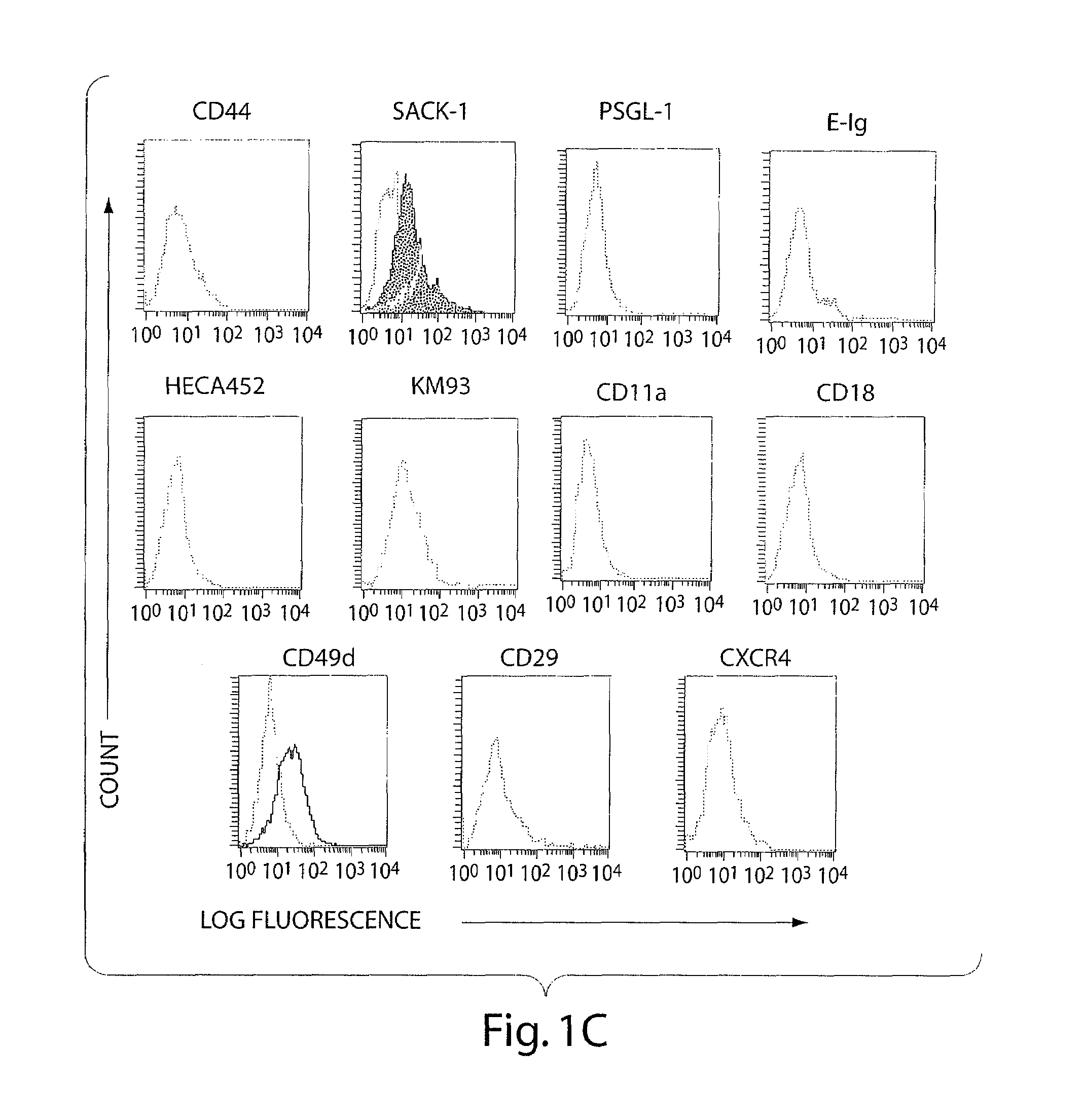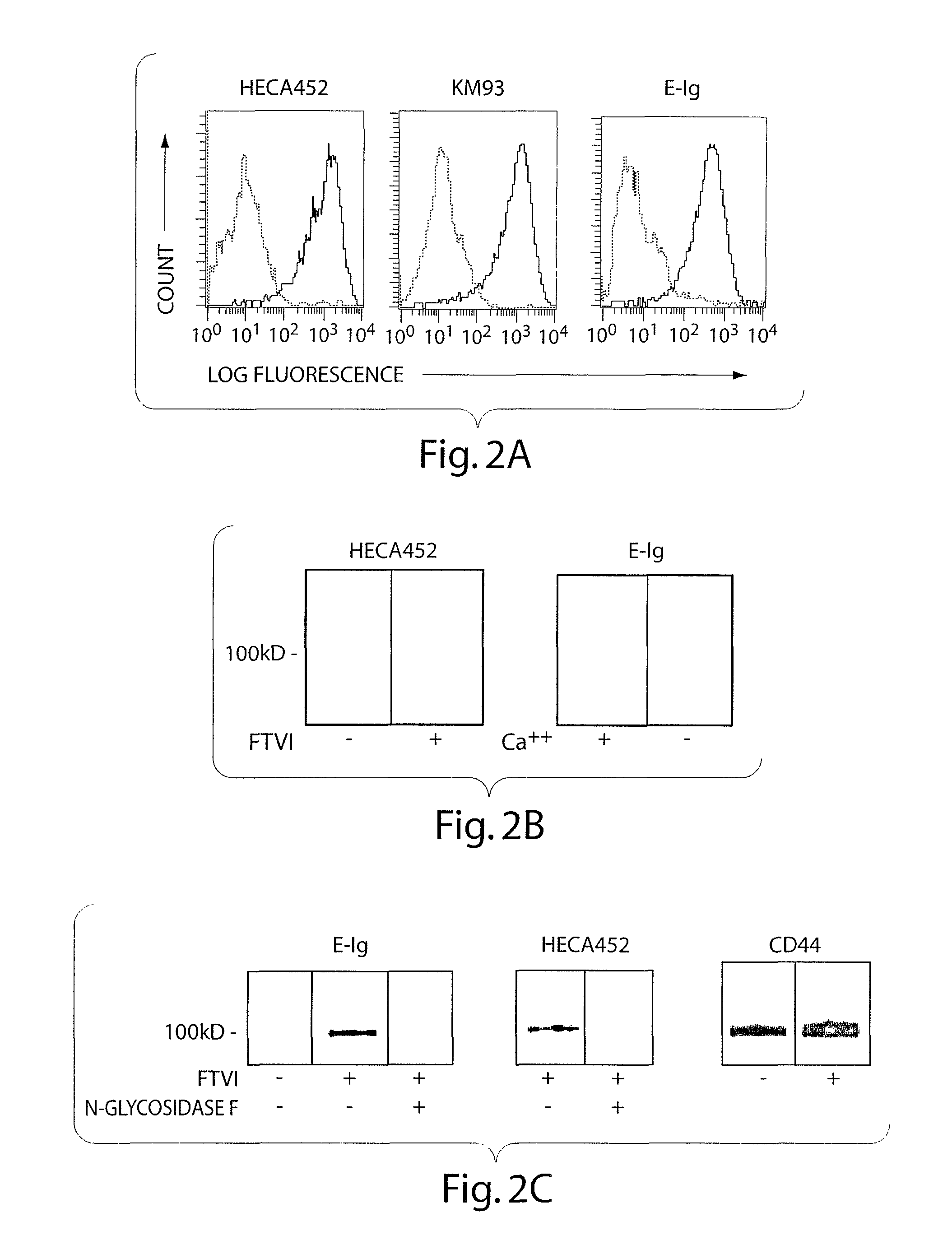Antibody SACK-1 that binds CD44 glycoforms
a technology of cd44 glycoform and anti-sack-1, which is applied in the field of anti-sack-1 that binds cd44 glycoform, can solve the problems of complex and sometimes conflicting results, and extensive investigations
- Summary
- Abstract
- Description
- Claims
- Application Information
AI Technical Summary
Benefits of technology
Problems solved by technology
Method used
Image
Examples
example 1
General Methods
[0051]Reagents: The following antibodies were from BD Pharmingen: function blocking murine anti-human E-selectin (68-5411; IgG1), rat anti-human CLA (HECA-452; IgM), murine anti-human PSGL-1 (KPL-1; IgG1), purified and FITC-conjugated murine anti-human L-selectin (DREG-56; IgG1), murine anti-human CXCR4 (12G5; IgG2a), FITC-conjugated murine anti-human CD18 (L130; IgG1), murine anti-human CD29 (MAR4; IgG1), PE-conjugated murine anti-human CD49d (9F10; IgG1), mouse IgG1, κ isotype, mouse IgG2a isotype, mouse IgM isotype, rat IgG isotype and rat IgM isotype. Rat anti-human CD44 (Hermes-1; IgG2a) was a gift of Dr. Brenda Sandmaier (Fred Hutchinson Cancer Research Center; Seattle, Wash.). Recombinant murine E-selectin / human Ig chimera (E-Ig) and murine anti-human CD44 (2C5; IgG2a) were from R&D Systems. Murine anti-human sLeX (KM93; IgM) was from Calbiochem. FITC-conjugated murine anti-human CD11a (25.3; IgG1), PE-conjugated mouse IgG1, κ isotype and FITC-conjugated mouse ...
example 2
Human Mesenchymal Stem Cells Express N-Linked, Sialylated Glycoforms of CD44 and Do Not Bind Selectins
[0069]Bone marrow contains two populations of stem cells, hematopoietic stem cells and mesenchymal stem cells (MSC). MSC represent a small population of cells present within normal marrow, but they can be isolated and expanded in culture. MSC characteristically express CD44 and several other adhesion molecules found on hematopoietic cells (14). However, it is unknown whether these primitive non-hematopoietic cells express any selectin ligands. This paucity of data, and the finding that HCELL is expressed among only the earliest hematopoietic cells (CD34+ / lin− cells) (10, 11), prompted us to examine whether MSC display similar carbohydrate modifications on CD44 that could bind selectins.
[0070]MSC were cultured from human bone marrow as per two established, published protocols (15, 16). The MSC derived using both methods were capable of multipotential differentiation toward adipocyte,...
example 3
Ex Vivo Fucosylation of Mesenchymal Stem Cells Results in HCELL Expression
[0072]To enforce HCELL expression, MSC were treated ex vivo with an α(1,3)-fucosyltransferase, fucosyltransferase VI (FTVI). In all MSC cultured from all donors, forced fucosylation resulted in profound staining with mAb HECA452 and KM93, consistent with expression of sialyl Lewis X epitopes (FIG. 2a). Western blot of cell lysates and of immunoprecipitated CD44 from FTVI-treated MSC revealed that the only glycoprotein bearing requisite sialofucosylations recognized by HECA452 was CD44 (FIGS. 2b and 2c). Moreover, fucosylated MSC bound E-Ig by flow cytometry, and Western blot analysis of cell lysates showed that the only glycoprotein supporting E-Ig binding was CD44 (FIG. 2). The relevant sialofucosylations of HCELL were displayed on N-glycans, as shown by abrogation of E-Ig binding following digestion with N-glycosidase F (FIG. 2c).
[0073]To analyze the E-selectin ligand activity of FTVI-treated MSC under physi...
PUM
 Login to View More
Login to View More Abstract
Description
Claims
Application Information
 Login to View More
Login to View More - R&D
- Intellectual Property
- Life Sciences
- Materials
- Tech Scout
- Unparalleled Data Quality
- Higher Quality Content
- 60% Fewer Hallucinations
Browse by: Latest US Patents, China's latest patents, Technical Efficacy Thesaurus, Application Domain, Technology Topic, Popular Technical Reports.
© 2025 PatSnap. All rights reserved.Legal|Privacy policy|Modern Slavery Act Transparency Statement|Sitemap|About US| Contact US: help@patsnap.com



